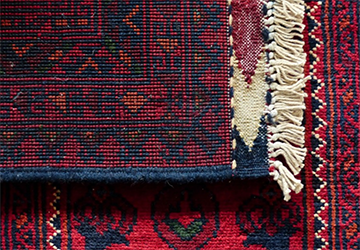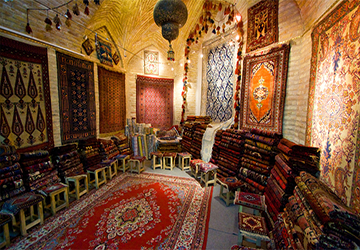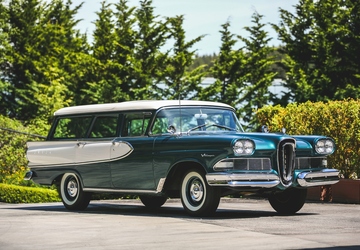How to Select the Perfect Antique Rug
Antique rugs are like timeless pieces of art that bring warmth, character, and a touch of history to your home. They're not just floor coverings; they're stories woven into threads. But choosing the perfect antique rug can be a daunting task. With countless styles, origins, and colors to consider, it's easy to get lost in the rug jungle.
Don't worry; we're here to help you navigate the world of antique rugs with a simplified guide. So, let's unravel the secrets of selecting the perfect antique rug for your space.
Know Your Style
The initial phase of embarking on your exploration of antique rugs involves identifying your style. Antique rugs boast diverse designs, from intricate floral motifs to geometric configurations.
Are you drawn to the timeless, traditional aesthetics, or do you lean towards a contemporary, minimalist ambiance? Grasping your unique style preferences will streamline your choices and simplify decision-making.

Size Matters
Size is crucial when it comes to antique rugs. You don't want a carpet that's too small, making your room feel disconnected, or one that's too large, swallowing everything in its path. Measure your space accurately before you start shopping. Typically, a rug should fit under the main furniture pieces, like your sofa and coffee table, leaving a bit of floor visible around the edges.
Material Matters
Antique rugs are crafted from various materials, each with its charm and characteristics. Here are some common materials you'll encounter:
Wool: Wool rugs are durable and naturally stain-resistant. They're perfect for high-traffic areas and offer a soft underfoot feel.
Silk: Silk rugs have a luxurious sheen and intricate details. They're delicate and best suited for low-traffic areas or as decorative pieces.
Cotton: Cotton rugs are affordable and easy to clean. They're great for casual spaces and kitchens.
Blend: Some rugs combine materials for added texture and durability. Wool-silk blends, for example, offer the best of both worlds.
Choose a material that aligns with your lifestyle and the room's purpose.
Age Matters
Antique rugs aren't just old; they're historic. The age of a rug can significantly impact its value, appearance, and even maintenance. Rugs are often categorized into the following age groups:
Antique (over 100 years old): These rugs are valuable collector's items. They may show wear and age, but that's part of their charm.
Vintage (between 50 and 100 years old): Vintage rugs are still old but slightly more accessible in terms of price. They often have a worn-in, cozy feel.
Semi-antique (between 20 and 50 years old): These rugs are relatively newer but can still be considered antique in some cases. They strike a balance between history and condition.
New: Some rugs are made to look antique, but they are brand new. They mimic the style of old carpets without the wear and tear.
Consider the rug's age based on your preferences, budget, and the level of maintenance you're willing to commit to.
Origin and Design
The origin of an antique rug can tell you a lot about its design, colors, and patterns. Here are a few famous rug-producing regions:
Persian/Iranian: Persian rugs are renowned for their intricate floral designs and rich colors. Cities like Tabriz, Isfahan, and Kashan produce exquisite rugs.
Turkish: Turkish rugs often feature geometric patterns and bold, vibrant colors. The city of Istanbul is a hub for Turkish rug production.
Indian: Indian rugs come in various styles, from traditional to contemporary. They're known for their fine craftsmanship and attention to detail.
Caucasian: Caucasian rugs are characterized by their tribal designs and bold, earthy colors. They originate from the South Caucasus region.
Chinese: Chinese rugs typically feature delicate floral motifs and softer color palettes. They're known for their silk rugs.
Understanding the origin and design styles will help you pick a rug that suits your aesthetic preferences.

Color Considerations
An antique rug's colors can drastically affect a room's ambiance. Here are a few tips on choosing the right colors:
Neutral Tones: If you want your rug to blend with the room's decor, use neutral tones like beige, gray, or cream.
Bold and Vibrant: Opt for rugs with bold, vibrant colors for a statement piece. They can add energy and warmth to a room.
Complementary Colors: Consider the existing color scheme of your space. A rug with colors that complement your furniture and walls can tie the room together beautifully.
Age-Appropriate Fading: Remember that antique rugs might have faded over time. This can give them a unique, vintage look. Embrace the imperfections if that's your style.
Knot Density
Knot density is a measurement that indicates the quantity of knots within a rug's one-square-inch area. Higher knot density generally means better quality and durability. However, it's essential to balance knot density and budget. A high knot-density rug can be costly but may also last for generations.
Condition Matters
Antique rugs, especially those that are truly old, might show signs of wear and tear. Before purchasing, carefully inspect the carpet for damage, stains, or repairs. Some wear is expected with antique rugs, but make sure it's acceptable to you. If you're investing in a valuable antique rug, it's wise to have it professionally cleaned and restored if necessary.
Price Point
Antique rugs vary widely in price, depending on age, origin, size, and condition. Before you start shopping, set a budget range. This will assist you in streamlining your choices and preventing yourself from becoming enamored with a rug that exceeds your budget. Keep in mind that when it comes to antique rugs, they represent an investment, making it crucial to find a harmonious equilibrium between quality and cost-effectiveness.
Conclusion
Selecting the perfect antique rug is a journey that combines aesthetics, history, and personal preferences. Knowing your style, size requirements, material choices, and budget will help you make an informed purchase decision.
Don't rush the process; take your time to explore various options and trust your instincts. In the end, the perfect antique rug is the one that resonates with you and adds a unique charm to your home, making it a cozy and inviting space steeped in history and character. Happy rug hunting!





